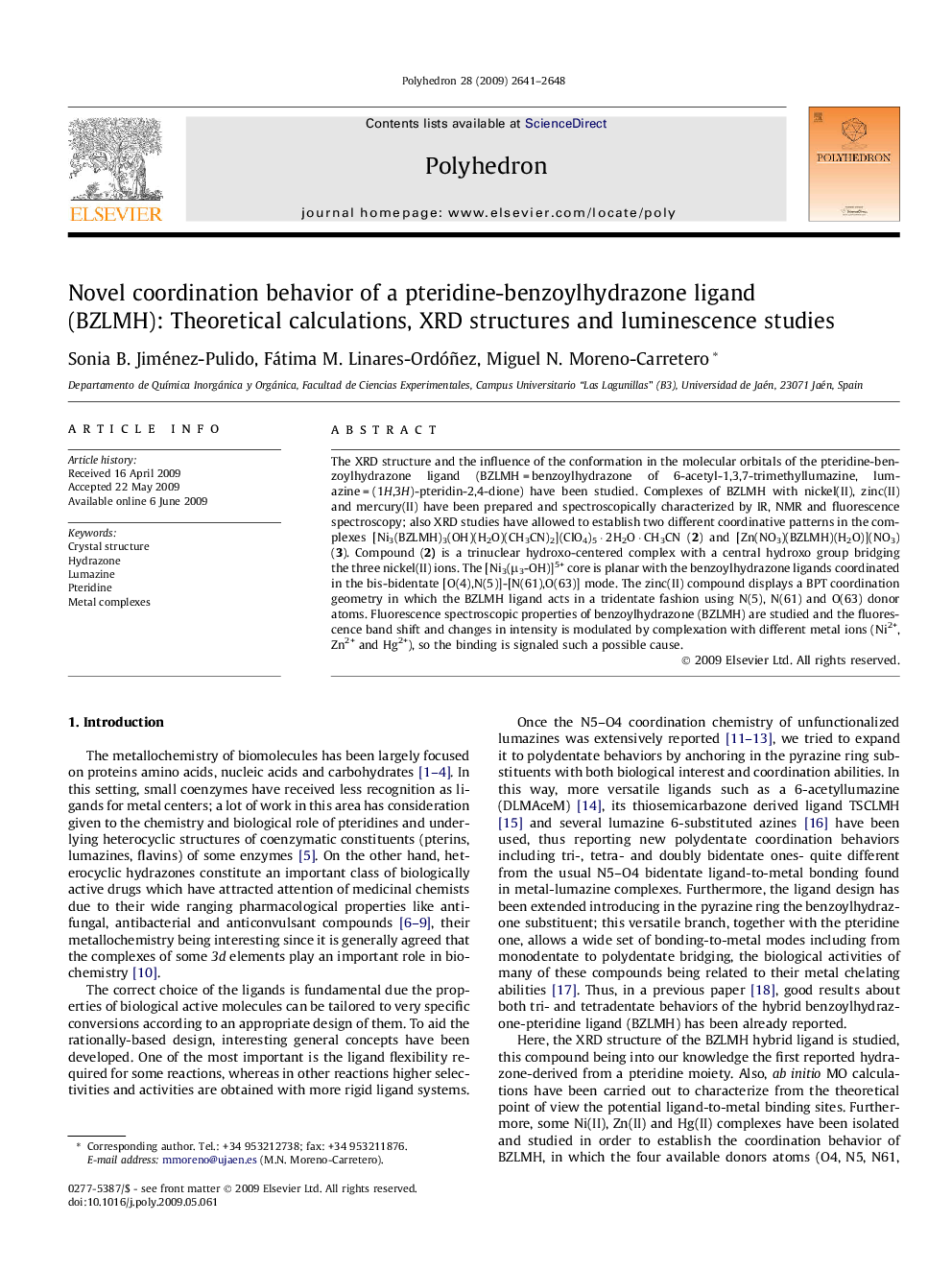| Article ID | Journal | Published Year | Pages | File Type |
|---|---|---|---|---|
| 1339695 | Polyhedron | 2009 | 8 Pages |
The XRD structure and the influence of the conformation in the molecular orbitals of the pteridine-benzoylhydrazone ligand (BZLMH = benzoylhydrazone of 6-acetyl-1,3,7-trimethyllumazine, lumazine = (1H,3H)-pteridin-2,4-dione) have been studied. Complexes of BZLMH with nickel(II), zinc(II) and mercury(II) have been prepared and spectroscopically characterized by IR, NMR and fluorescence spectroscopy; also XRD studies have allowed to establish two different coordinative patterns in the complexes [Ni3(BZLMH)3(OH)(H2O)(CH3CN)2](ClO4)5 · 2H2O · CH3CN (2) and [Zn(NO3)(BZLMH)(H2O)](NO3) (3). Compound (2) is a trinuclear hydroxo-centered complex with a central hydroxo group bridging the three nickel(II) ions. The [Ni3(μ3-OH)]5+ core is planar with the benzoylhydrazone ligands coordinated in the bis-bidentate [O(4),N(5)]-[N(61),O(63)] mode. The zinc(II) compound displays a BPT coordination geometry in which the BZLMH ligand acts in a tridentate fashion using N(5), N(61) and O(63) donor atoms. Fluorescence spectroscopic properties of benzoylhydrazone (BZLMH) are studied and the fluorescence band shift and changes in intensity is modulated by complexation with different metal ions (Ni2+, Zn2+ and Hg2+), so the binding is signaled such a possible cause.
Graphical abstractThe reactivity of the benzoylhydrazone of 6-acetyl-1,3,7-trimethyl-(1H,3H)-pteridine-2,4-dione) towards Ni(II), Zn(II) and Hg(II) has been investigated and the XRD structure of a nickel trimer and a monomeric Zn(II) complexes reported. A wide variety of coordinating patterns for the ligand are reported, which may influence the fluorescence spectroscopic properties of the complexes.Figure optionsDownload full-size imageDownload as PowerPoint slide
